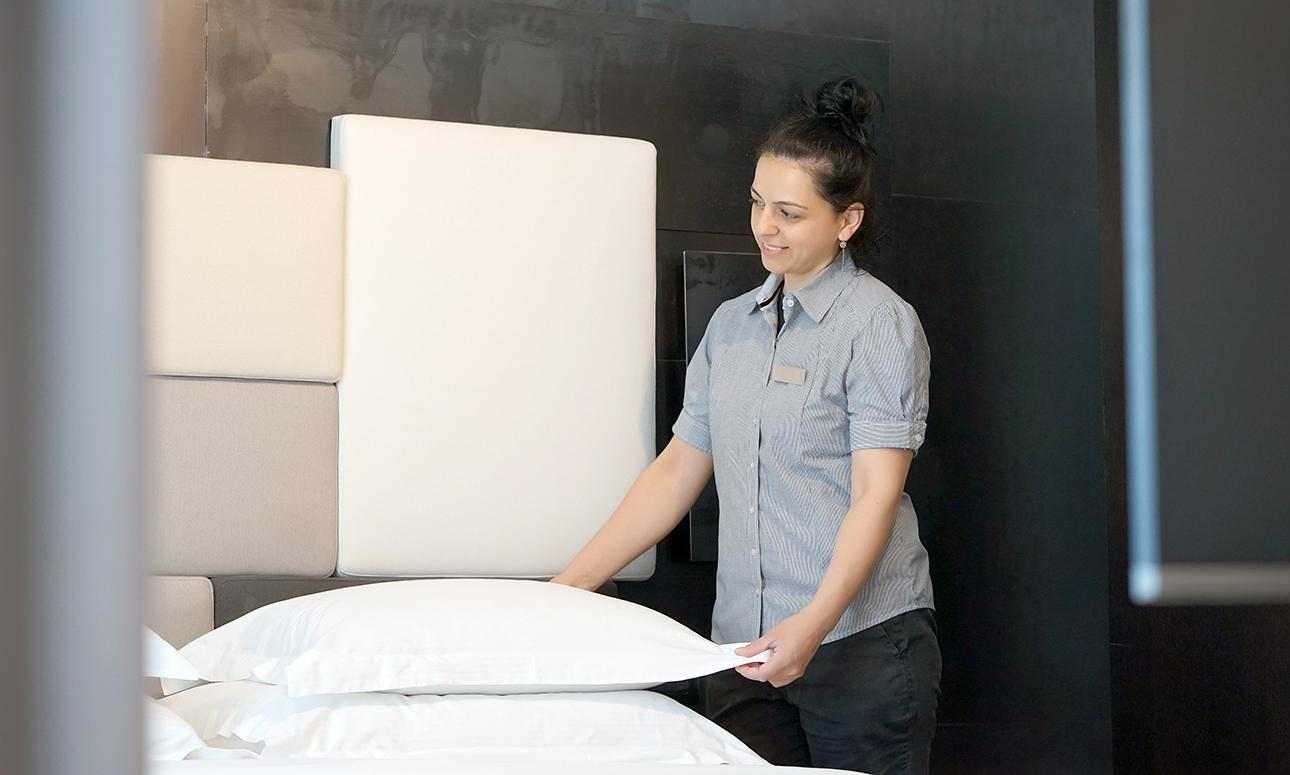For hotel groups and chains, maintaining a brand standard and consistent cleanliness is essential for securing repeat business. In today’s age of social media and online reviews, a lack of cleanliness can spell trouble not only for one property, but an entire brand. A 2018 Harris Poll found that 91 percent of Americans would not visit a hotel with negative online reviews about its restrooms.[1]
A common challenge hotels face is achieving consistently clean properties when dealing with variables such as foot traffic and weather that differ from location to location. Consistent results can be accomplished by following these four simple steps:
Define the cleaning standard
First, the hotel, along with cleaning partners such as the chemical manufacturer and the building service contractor (BSC), must define the cleaning standard. In other words, what does the hotel want the customer to experience when they visit each property? The standard of cleanliness should encompass the key areas of the facility that will have the greatest impact on customers’ buying behavior. This includes restrooms, entrance ways, floors, tables and other customer-facing areas.
Devise a cleaning plan
In working with product manufacturers, hotel owners and managers must figure out how to achieve the desired level of cleanliness, or brand standard, across different geographies and property layouts. The cleaning plan should include carefully selected products, processes, tools and equipment. For example, concentrated cleaning products can reduce waste while improving cleanliness and color-coded tools can help eliminate cross contamination between areas like lobby restrooms, spas and restaurants.
Implement training
Training all employees at one time and in one place is not feasible when managing multiple hotels across one city, several cities or even states, and turnover can add a further hindrance. Online training programs are an ideal way to educate employees because they are available 24/7 in multiple languages, interactive and can be tailored to adult learning styles, job roles and specific properties. Training schedules should be developed and combine online training with in-person training for special topics.
Monitor cleaning performance
Organizations can validate cleaning using a secure auditing platform that collects, analyzes and reports data in real time. They can pinpoint trends for each employee and facility, across all properties. This facilitates continuous improvement of hygiene and safety standards by identifying where cleaning programs need to be refined and where retraining needs to occur. Over time, as each hotel property refines its cleaning program, the gap between customers’ expectations and cleaning outcomes will become smaller.
By following four simple steps, hotels can develop and maintain a consistent brand image across multiple properties. Providing customers with a clean atmosphere in entryways, hotel rooms and dining areas will undoubtedly brand loyalty, translating to greater revenue.



